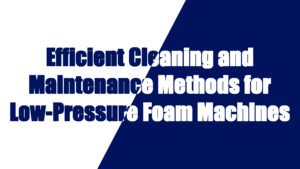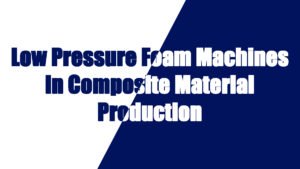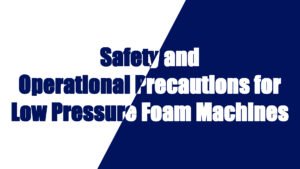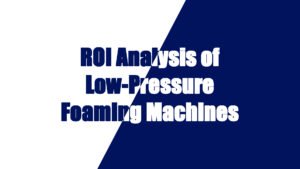In the footwear industry, materials need to provide a balance of comfort, durability, flexibility, and performance. Polyurethane (PU) is a popular material in footwear manufacturing due to its versatility, lightweight properties, and ability to be molded into various shapes. However, it competes with other materials such as EVA (Ethylene-Vinyl Acetate), Rubber, Leather, PVC (Polyvinyl Chloride), Und Thermoplastic Elastomers (TPE). Each material has specific advantages and disadvantages depending on the intended application, such as outsoles, uppers, insoles, Und lining materials.
Materials Comparison Table:
| Property | Polyurethan (PU) | EVA (Ethylene-Vinyl Acetate) | Rubber | Leather | PVC (Polyvinyl Chloride) | Thermoplastic Elastomers (TPE) |
|---|---|---|---|---|---|---|
| Density (g/cm³) | 1.1 – 1.3 | 0.92 – 1.0 | 1.1 – 1.4 | 0.9 – 1.0 | 1.3 – 1.4 | 0.9 – 1.2 |
| Tensile Strength (MPa) | 30 – 60 | 10 – 30 | 20 – 40 | 20 – 50 | 40 – 60 | 15 – 50 |
| Elongation at Break (%) | 300 – 800% | 100 – 400% | 200 – 400% | 20 – 50% | 50 – 200% | 100 – 600% |
| Hardness (Shore A) | 60 – 95 | 50 – 80 | 50 – 70 | 40 – 70 | 60 – 85 | 60 – 90 |
| Abrasion Resistance | Excellent | Good | Excellent | Moderate | Low to moderate | Good |
| Impact Resistance | Hoch | Moderate | Excellent | Moderate | Poor to moderate | Hoch |
| Water Resistance | Excellent | Excellent | Good | Moderate to low | Poor | Good |
| Chemical Resistance | Excellent, resistant to oils, solvents, and acids | Good | Moderate to excellent | Poor | Poor | Moderate to high |
| Flexibility | High, flexible for molding and forming | Hoch | Moderate to low | Niedrig | Niedrig | Hoch |
| Temperature Resistance | -40°C to 80°C | -30°C to 80°C | -40°C to 120°C | 0°C to 80°C | -10°C to 50°C | -20°C to 90°C |
| Shock Absorption | Excellent, soft cushioning | Good | Moderate to high | Niedrig | Poor | Good |
| Breathability | Moderate | Hoch | Low to moderate | Hoch | Niedrig | Hoch |
| Recyclability | Difficult to recycle | Hoch | Hoch | Niedrig | Moderate (limited) | Hoch |
| Cost | Moderate to high | Low to moderate | Low to moderate | Hoch | Low to moderate | Moderate |
| Applications in Footwear | Outsoles, midsoles, insoles, uppers | Footbeds, insoles, midsoles | Outsoles, midsoles | Uppers, luxury shoes | Waterproof shoes, sandals, boots | Uppers, midsoles, cushioning |
Detailed Analysis:
1. Polyurethane (PU):
- Vorteile:
- Abrasion Resistance: PU is highly resistant to abrasion, making it ideal for outsoles Und midsoles in footwear. It is commonly used in performance footwear for its durability.
- Flexibility: Polyurethane can be molded into various shapes, which provides flexibility in creating midsoles, insoles, Und uppers with different densities for comfort and support.
- Shock Absorption: PU offers excellent cushioning and shock absorption, making it a preferred choice for sports shoes and comfort footwear.
- Chemical Resistance: PU has good resistance to oils, solvents, and acids, which adds durability in harsh environments.
- Water Resistance: PU is highly resistant to water, which makes it useful in water-resistant footwear or for shoes used in wet environments.
- Disadvantages:
- Cost: Polyurethane is generally more expensive than materials like EVA or rubber, which can make it less attractive for low-cost or mass-market products.
- Recycling: Polyurethane is difficult to recycle, which presents an environmental challenge.
2. EVA (Ethylene-Vinyl Acetate):
- Vorteile:
- Lightweight: EVA is known for being incredibly light, making it an ideal material for midsoles Und footbeds in athletic footwear where weight reduction is crucial.
- Flexibility: EVA offers high flexibility, which enhances comfort in footwear and allows for easy molding into various shapes and designs.
- Shock Absorption: EVA has excellent cushioning properties, providing shock absorption and making it ideal for sports shoes Und running shoes.
- Breathability: EVA provides good air circulation, contributing to comfort Und foot health by reducing moisture buildup.
- Disadvantages:
- Haltbarkeit: EVA is not as durable as materials like polyurethane and rubber, making it less ideal for long-term use in high-wear areas like outsoles.
- Chemical Resistance: EVA is not as resistant to oils and solvents as PU, and it can degrade under harsh chemical conditions.
3. Rubber:
- Vorteile:
- Abrasion Resistance: Rubber is extremely durable and resistant to abrasion, making it the go-to material for outsoles in heavy-duty footwear, especially work boots Und industrial shoes.
- Impact Resistance: Rubber excels at absorbing impacts, providing great cushioning and support for footwear that needs to handle heavy loads or rough terrains.
- Water Resistance: Rubber is highly water-resistant, making it ideal for waterproof footwear, such as rain boots Und rubber boots.
- Disadvantages:
- Gewicht: Rubber tends to be heavier than materials like EVA and PU, which can be a downside for athletic or performance footwear that requires lightness.
- Flexibility: Rubber lacks the flexibility of PU or EVA, which limits its use in flexible uppers oder insoles.
- Breathability: Rubber is not breathable, which can lead to moisture buildup and discomfort in shoes worn for extended periods.
4. Leather:
- Vorteile:
- Haltbarkeit: Leather is a strong, durable material that provides long-lasting performance. It is commonly used in luxury shoes, formal footwear, Und high-end boots.
- Comfort: Leather is naturally breathable and conforms to the foot’s shape over time, providing excellent comfort and fit.
- Aesthetic Appeal: Leather provides a premium appearance and is often used for dress shoes Und high-end casual footwear.
- Disadvantages:
- Gewicht: Leather is heavier than synthetic materials, making it less ideal for lightweight athletic footwear oder performance shoes.
- Water Resistance: Leather can absorb water unless treated, which limits its use in waterproof footwear.
- Maintenance: Leather requires regular care and maintenance to keep it in good condition, especially in wet or harsh environments.
5. Polyvinyl Chloride (PVC):
- Vorteile:
- Waterproof: PVC is highly resistant to water, making it suitable for waterproof shoes, sandals, Und boots.
- Cost-Effective: PVC is a low-cost material, making it ideal for mass-market sandals Und rain boots.
- Disadvantages:
- Flexibility: PVC is rigid and lacks the flexibility of materials like PU or EVA, which can be uncomfortable for long periods of wear.
- Breathability: PVC is not breathable, which can cause discomfort in shoes worn for extended periods.
- Chemical Resistance: PVC is more susceptible to chemical degradation compared to PU, making it less durable in chemically harsh environments.
6. Thermoplastic Elastomers (TPE):
- Vorteile:
- Flexibility and Comfort: TPE provides flexibility similar to rubber, making it suitable for midsoles, outsoles, Und inserts in footwear that requires elasticity and comfort.
- Shock Absorption: TPE offers good cushioning and shock absorption, ideal for athletic footwear.
- Recyclability: TPE is more recyclable than traditional rubber, making it an environmentally friendly option in footwear manufacturing.
- Disadvantages:
- Haltbarkeit: TPE tends to be less durable than PU and rubber, especially in high-wear areas like outsoles.
- Chemical Resistance: While TPE offers decent chemical resistance, it is not as resilient to oils and solvents as PU.
Summary:
Polyurethan (PU)
- Pros: Excellent abrasion resistance, shock absorption, Und flexibility. Ideal for outsoles, midsoles, Und insoles in high-performance footwear. Chemical resistance Und water resistance make it suitable for a wide range of footwear applications.
- Cons: Higher cost Und difficult recyclability.
EVA
- Pros: Lightweight, shock absorbing, Und flexible, making it ideal for sports shoes Und running shoes. Good breathability Und comfort.
- Cons: Lower durability compared to PU and rubber, and less chemical resistance.
Rubber
- Pros: Extremely durable, abrasion-resistant, Und impact-resistant, ideal for work boots Und heavy-duty footwear. Waterproof and provides great traction.
- Cons: Heavy, rigid, and lacks flexibility Und breathability.
Leather
- Pros: Dauerhaft, comfortable, Und breathable. Premium aesthetic and luxury appeal for dress shoes.
- Cons: Heavier, less water-resistant, and requires regular maintenance.
aus PVC
- Pros: Waterproof Und cost-effective, ideal for waterproof footwear like rain boots Und sandals.
- Cons: Rigid, low flexibility, Und poor breathability.
Thermoplastic Elastomers (TPE)
- Pros: Flexible, shock-absorbing, Und recyclable, suitable for athletic footwear Und comfort insoles.
- Cons: Less durable than PU and rubber, and not as chemically resistant.
Conclusion:
- Polyurethan is the most versatile material for high-performance footwear, offering excellent abrasion resistance, shock absorption, Und flexibility. It is ideal for sports shoes, midsoles, Und insoles.
- EVA is perfect for lightweight, comfort-oriented footwear like running shoes, though it lacks long-term durability.
- Rubber is best suited for heavy-duty Und waterproof footwear such as work boots Und rain boots, thanks to its abrasion resistance Und impact protection.
- Leather provides a premium feel Und comfort but is less suitable for performance footwear due to its weight and maintenance needs.
- aus PVC is cost-effective and waterproof, making it ideal for rain boots Und sandals, but it lacks flexibility and breathability.
- TPE offers a balance of comfort Und environmental friendliness, but may not match the durability and chemical resistance of PU or rubber in demanding footwear applications.
Polyurethane stands out for its performance versatility across various footwear applications, providing a cost-effective solution for durable, high-performance, and comfortable shoes.



































